Workplace teams are often compared to other things: the well-oiled machine, stones that were once rough and are now polished, the crew of a ship, the characters in a movie. Each of these metaphors is effective in describing what a team actually is, but they don’t necessarily explain what a team does and how it functions. Frequently, members of the animal kingdom exhibit behaviors humans could replicate, especially as it relates to teamwork. A wolf pack is a striking illustration of team roles and responsibilities, boundaries, communication, social hierarchy, and collaboration.
A few years ago, Stefan Lindegaard published a post via LinkedIn that sparked quite a conversation among leadership scholars. Lindegaard’s premise was that the alpha wolf — the one who leads the pack — is like a CEO who leads without fear and trusts that her team will jump in when an attack (or any disruption) occurs.
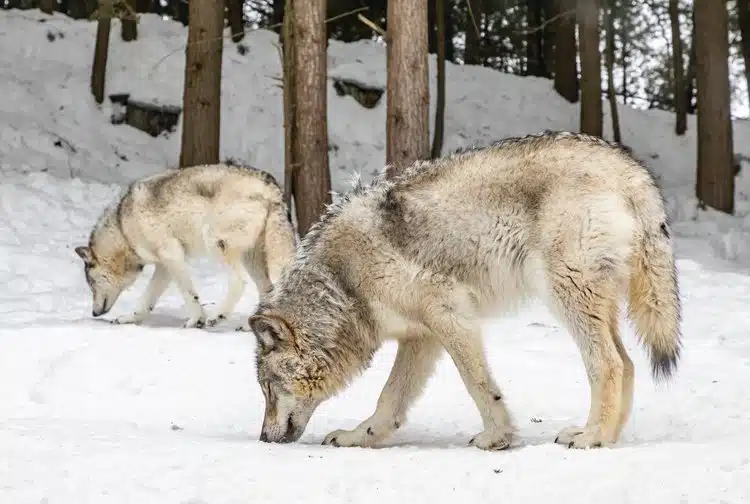
Scholars disputed the notion that alpha wolves are “top-ranking” because pack behavior dictates that permanent social status does not exist. Instead, the pack members move fluidly from one role to another based on current context (Northern Prairie Wildlife Research Center, 2016). The social hierarchy exists to give structure to the pack, and it informs the members regarding decision-making, mating, and other roles.
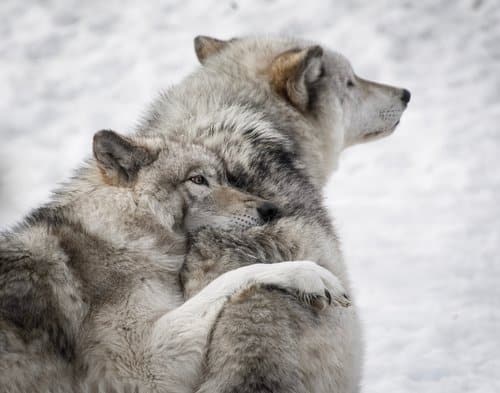
Wolves’ roles in the pack are clearly defined, as are their boundaries, but things change over time.
Throughout their lives, wolves are bound to a hierarchical structure. Within a pack, there are alpha wolves (one male, one female), who are the leaders. Next are beta wolves, who are essentially second in command and who serve as leaders when the alphas are not present.
Typically, there is at least one enforcer, who is responsible for enforcing pack rules and managing pack protection. In larger packs, there are subordinates (older offspring and aged wolves), familiars (not necessarily related to packmates but part of the pack), pups, and there is an omega wolf, who is fully submissive and responsible for caregiving.
As the wolf pack matures and members change (through births, deaths, and mating), the “assignments” within the hierarchical structure change. The pack becomes accustomed to the fluidity, but it always ensures that the roles are filled because the formal structure helps the wolves understand who is responsible for what at any given time. These clear boundaries help the members of the pack to work together more efficiently as a team to raise their pups, hunt for food, and defend their territory because they know what each must do—and how not to step on one another’s toes, so to speak
The teamwork wolves exhibit extends beyond these basic survival actions, though, and some of the behaviors mirror those of highly successful human workgroups. Most teams have formal titles, such as those defined by Belbin Associates (2019):
- Resource Investigator (inquisitive)
- Teamworker (versatile)
- Co-ordinator (leader, delegator)
- Plant (creative)
- Monitor Evaluator (logical, objective)
- Specialist (subject matter expert)
- Shaper (motivator)
- Implementer (planner)
- Completer Finisher (quality control)
While these roles don’t necessarily parallel those within the wolf pack, each is considered essential to the success of the team. The clearly defined boundaries of each role also allow each person on the team some level of autonomy to function on her own but still abide by group rules and structures.
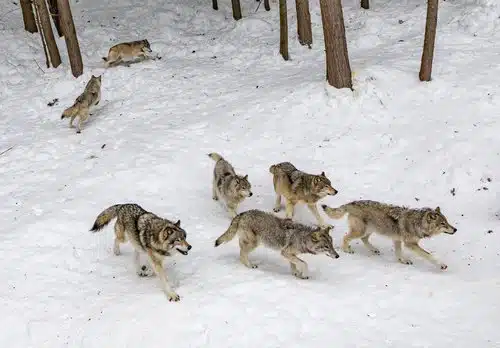
Wolves work together in groups of all sizes and across huge territories.
What’s interesting about wolves is that they’re highly social and are closely bonded to their pack mates (Defenders of Wildlife, 2019). Packs can consist of anywhere from four to 30 wolves, and their territories range from 25 to hundreds of square miles (International Wolf Center, 2019).
In the workplace, teams can consist of as few as two people and as many as hundreds. They can be located in the same office, or they can be remote workers located all over the world. Irrespective of size and location, teams are expected to complete work together, much in the way the wolf pack manages the pack on a daily basis.
Wolves are considered expert communicators.
According to Western Wildlife Outreach (2019), a wolf’s primary method of communication is through body language. Sharing facial expressions and ear and tail positions allows the wolves to communicate emotion with one another and with predators. Wolves’ ability to exhibit and interpret body language in this way helps the pack members understand each other and get along.
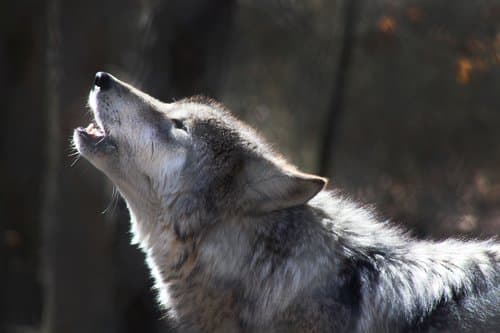
Dominant wolves have upright ears and tails and walk with confidence, demonstrating that they are in charge. Mid-range, or submissive, wolves tuck their ears and tails and frequently roll over to expose their bellies to their dominant counterparts. Omega wolves, who are considered the lowest-ranking in the pack, will crouch and lower their heads when another wolf is approaching (Living with Wolves, 2019).
Wolves also communicate vocally. Like most canines, vocalization includes barking (as pups, to learn to communicate, and as adults, to alert the group to danger), howling (to gather the group, greet new wolves, or celebrate), whining (to indicate affection, anxiety, or submission), and growling (to show aggression and dominance) (Living with Wolves, 2019).
Within workplace teams, nonverbal and verbal communication help those on the team understand the message that is being sent. But, what happens when the nonverbal message conflicts with the verbal one? According to Merhabian (2007) and confirmed by several more recent studies, including Jia, Cheng, and Hale (2017), 55% of communication is nonverbal, meaning that information is given through facial expressions and other body cues; 38% of communication is related to tone of voice; and only 7% comes from the actual words. If a team leader enters the room with her head held high and strides with confidence, much like the alpha wolf would, she is deemed confident; however, if she chooses to demoralize the team by yelling at them, her word choices—no matter how positive—don’t matter.
Wolves spend a lot of time playing, which helps develop leadership and communication skills.
According to Essler et al. (2016), social play allows pack members to compete with one another and build their skills in a “safe” context. Wolves are particularly playful animals, routinely exhibiting play behavior with other wolves of all ages and both genders. Interestingly, wolves don’t play equitably.
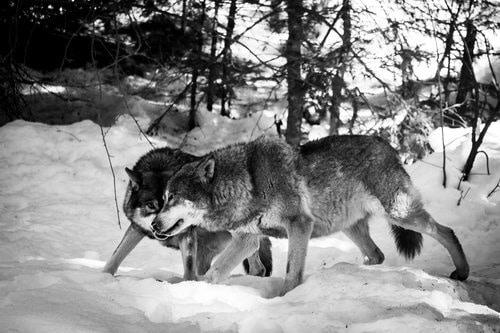
Some species, including humans, will allow their play partners to win from time to time. This phenomenon is referred to as self-handicapping, but wolves won’t do it when they’re playing with members of their own packs because competitive play helps shape the ranking within the pack. Leaders emerge, and as they age, they rise to positions of power.
During playtime, wolves exercise visual and vocal communication. These communications are considered signals to the play opponent. This is especially true in the case of the play bow, in which the wolf bows down low but keeps her hind quarters elevated, kind of like a downward dog position in yoga. Byosiere, Espinosa, Marshall-Pescini, Smuts, and Range (2016) theorized that this position helps the wolf pup learn how to mount an attack against an opponent while simultaneously defending her position.
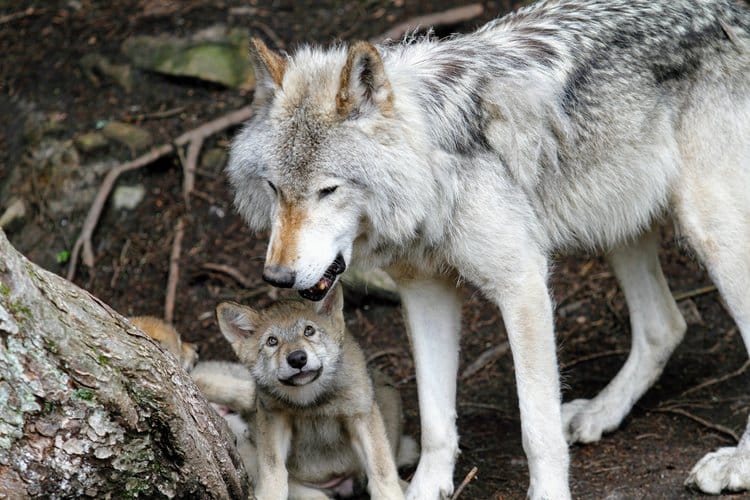
In comparison, humans don’t play as much, especially as adults, but there may be lessons to be learned about playing competitively as wolves do. In 2015, Ernst & Young found that young women who participated in organized sports developed skills and attributes that improve their likelihood of becoming corporate leaders. Athletes develop confidence, tend to be in good health, generally have better educational opportunities, and often understand how to work with others to achieve a shared goal.
In the workplace, employees aren’t often given the opportunity to play, but it is possible to create structured “play” activities, such as retreats, escape rooms, ropes courses, go-kart racing, and similar as teambuilding activities. When co-workers participate in these events, they build communication skills, and leaders step up to ensure success.
Be the Wolfpack
Like wolves, successful teams identify roles for each participant based on the individual team members’ strengths and establish a scope of work before beginning any actual work. However, these roles aren’t fixed; they can—and perhaps should—change from project to project. There is room for evolution and growth, but the clarity of defined roles and responsibilities across projects at any given time makes cooperation and decision-making easier, irrespective of team size and location.
Humans sometimes forget that how they communicate is more important than what they say; wolves lead with body language and vocalize only for specific reasons. Team members who work at reading non-verbal cues more effectively—as the wolves have—understand one another better.
Teams should also be willing to have fun with one another. Informal “play” time helps teams communicate more effectively, develop stronger social bonds, appreciate negotiation and compromise through competition, and encourage new leaders to emerge.
How can your team implement new strategies based on the way the wolves operate?

References
References
- Belbin Associates. (2019). The nine Belbin team roles. Retrieved from https://www.belbin.com/about/belbin-team-roles/
- Byosiere, S.-E., Espinosa, J., Marshall-Pescini, S., Smuts, B., & Range, F. (2016). Investigating the function of play bows in dog and wolf puppies. PLoS One, 11(12), 1-16. doi:10.1371/journal.pone.0168570
- Defenders of Wildlife. (2019). Basic facts about gray wolves [blog post]. Retrieved from https://defenders.org/gray-wolf/basic-facts
- Ernst & Young, LLP. (2015). Sport is a critical lever in advancing women at all levels, according to new EY/espnW report. Retrieved from https://www.ey.com/gl/en/newsroom/news-releases/news-sport-is-a-critical-lever-in-advancing-women-at-all-levels-according-to-new-ey-espnw-report
- Essler, J. L., Cafazzo, S., Pescini-Marshall, S., Viranyi, Z., Kotrschal, K., & Range, F. (2016). Play behavior in wolves: Using the ‘50:50’ rule to test for egalitarian play styles. PLoS One, 11(5), 1-19. doi:10.1371/journal.pone.0154150
- Jia, M., Cheng, J., & Hale, C. L. (2017). Workplace emotion and communication: Supervisor nonverbal immediacy, employee’s emotion experience, and their communication motives. Management Communication Quarterly, 31(1), 69-87. doi:10.1177/0893318916650519
- Lindegaard, S. (2016, January 16). Leadership lessons from a wolf pack [blog post]. Retrieved from https://www.linkedin.com/pulse/leadership-lessons-from-wolf-pack-stefan-lindegaard/
- Living with Wolves. (2019). The language of wolves. https://www.livingwithwolves.org/about-wolves/language/
- Merhabian, A. (2007). Nonverbal communication. New Brunswick, NJ: Aldine Transaction.
- Western Wildlife Outreach. (2019). Wolf ecology and behavior. Retrieved from https://westernwildlife.org/gray-wolf-outreach-project/biology-behavior-4/
The most recent posts
I’m going back to my roots. Literally. I’ve been highlighting my hair for longer than I’ve had a driver’s license. And this week, without much thought or realization of the significance, I asked my stylist to match the top half of my hair to the bottom half. Under all that blonde, I’m apparently a natural brunette. ...
Read Field Note“Love takes off the masks we fear we cannot live without and know we cannot live within.” James Baldwin Today, we’re living in a divided world of “us” and “them,” of people who think/look like me and those who don’t. When things are going well, when we’re around people like us, it feels easier to ...
Read Field NoteI laughed with my family and colleagues this week sharing that I was this year’s banquet keynote. The class of ‘93 over there is probably laughing too. I also told many of them I’d start this address tonight with a reminder: I’m lucky I finally made my way out of Mr. Evans’ office to speak ...
Read Field Note
Subscribe to our newsletter
Sign up with your email address to receive our monthly newsletter. What do we send your way? Recommended resources, introspective content, information on upcoming events, & more.

